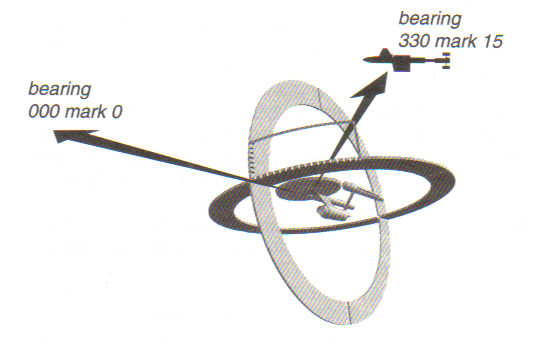| Topic: Edge of the universe | |
|---|---|
|
there is no "edge"... our universe in theory is infinite and ever expanding so you would be unable to locate an end because it doesn't exist Well that's little complicated and incomplete as this is only one perspective. Other one is that edge really doesn't exist but universe is not infinite. Also it is not sure that if it is going to expand forever and ever and ever or it will stop at some moment and will it start contracting or not. But may be if we could get out of this universe we may be able to other universes. Because if we are living in universe, universe should also be placed somewhere. And there may be other universes too. |
|
|
|
|
|
there is no "edge"... our universe in theory is infinite and ever expanding so you would be unable to locate an end because it doesn't exist
Well that's little complicated and incomplete as this is only one perspective. Other one is that edge really doesn't exist but universe is not infinite. Also it is not sure that if it is going to expand forever and ever and ever or it will stop at some moment and will it start contracting or not. But may be if we could get out of this universe we may be able to other universes. Because if we are living in universe, universe should also be placed somewhere. And there may be other universes too. Interesting... Here's how I see it. The Universe is expanding. It is not expanding directionally, more like the surface of a multi-dimensional balloon. Everything is expanding away from everything else into a void of immense size. The velocity of the matter that makes up the Universe is not arrested by the mass's gravity of the Universe as a whole. Therefore, it will continue to expand until it either hits something or loses its momentum. Some people postulate that it will collapse back in on itself, but the mass gravity is too undefined to have that affect. Likely, My own idea, is that it will expand until all the energy from all the mass has dissipated and it will slowly cool to a standstill. At that point, something may instigate a reaction of energy and the expansion will begin again. The expansion will push all the collapsed, inert matter from this Universe away from it as it expands. The new Universe(s) will then expand into the void between the old, the new and the existing. The force barrier pushes the other Universes away as the expansion occurs from the point of expansion. Thus, no two Universes will ever occupy the same space. Like two expanding spheres with an insulating space (buffer zone) between them. |
|
|
|
|
|
I saw this topic come back on my list and got excited!
I thought you'd found the edge 
|
|
|
|
|
|
The velocity of the matter that makes up the Universe is not arrested by the mass's gravity of the Universe as a whole. Therefore, it will continue to expand until it either hits something or loses its momentum. How is momentum lost if gravity does not affect velocity and there are no collisions ? By losing mass ? |
|
|
|
|
|
The velocity of the matter that makes up the Universe is not arrested by the mass's gravity of the Universe as a whole. Therefore, it will continue to expand until it either hits something or loses its momentum. How is momentum lost if gravity does not affect velocity and there are no collisions ? By losing mass ? Perhaps its momentum isn't lost? Far, far off in the distant future when the last remaining remnants of matter finally reaches absolute zero and no energy is being released the matter will be so spread out that movement thru the void will be meaningless. In the mean time, matter will be coalesced into ever-increasingly massive black holes of gravity. The distant future I am referring to is when even those hyper-massive black holes (The only remaining matter in the Universe) have cooled to absolute zero. Perhaps those corpses of matter will be so massive they will have cleared out all matter near them, being stationary and static as they slowly cool. The edge of the Universe would then be static hyper-massive matter locked in a void. Without energy there would be no light so the end of the universe is the absence of light. Then when some outside force jump starts energy production - Let There Be Light! and the whole process starts again. What that unseen force could be I have no clue, some call it GOD. |
|
|
|
|
|
The velocity of the matter that makes up the Universe is not arrested by the mass's gravity of the Universe as a whole. Therefore, it will continue to expand until it either hits something or loses its momentum. How is momentum lost if gravity does not affect velocity and there are no collisions ? By losing mass ? Perhaps its momentum isn't lost? Far, far off in the distant future when the last remaining remnants of matter finally reaches absolute zero and no energy is being released the matter will be so spread out that movement thru the void will be meaningless. In the mean time, matter will be coalesced into ever-increasingly massive black holes of gravity. The distant future I am referring to is when even those hyper-massive black holes (The only remaining matter in the Universe) have cooled to absolute zero. Perhaps those corpses of matter will be so massive they will have cleared out all matter near them, being stationary and static as they slowly cool. The edge of the Universe would then be static hyper-massive matter locked in a void. Without energy there would be no light so the end of the universe is the absence of light. Then when some outside force jump starts energy production - Let There Be Light! and the whole process starts again. What that unseen force could be I have no clue, some call it GOD. |
|
|
|
|
|
but in acualty it is just moving in all directions at once... what does "moving in all directions at once" mean ? to me it sounds like going nowhere and reminds me of what the (red? white?) queen said to alice in "through the looking glass" also, what is moving in all directions at once: - the universe and everything inside it? sounds like going nowhere - the universe as a whole but not necessarily everything inside it? sounds like expanding |
|
|
|
|
|
but in acualty it is just moving in all directions at once... what does "moving in all directions at once" mean ? to me it sounds like going nowhere and reminds me of what the (red? white?) queen said to alice in "through the looking glass" also, what is moving in all directions at once: - the universe and everything inside it? sounds like going nowhere - the universe as a whole but not necessarily everything inside it? sounds like expanding I understand what he was implying. Think spherical percolation. It isn't like an explosion that moves in a direction away from the initiation point. If that were so, we could readily see a direction from and to. There would be a uniformity to the rate of expansion. It would also leave a void where the matter expanded away from. In this sense, distance is our enemy. We detect light to measure the vast distances. If there is a void at the center, we would not be able to detect it. If we can't detect it, there is no way to measure it. Being spherical, there should be light on the other side of the void moving away from our point of view. We cannot detect it because it is not striking our detection devices. It will never strike our detection devices because it is moving away at the speed of light in the opposite direction. The only way we could ever detect past the center void is if we invent a device that detects something faster than light with a greater range. The light that we do detect is approximately 14 billion years old. That is the light that we detect now. In a billion years we may only detect light that is 13 billion years old or we may detect light that is 15 bllion years old. The light source we detect is not the current distance. It is the distance that the light has already traveled since it left the source. Many of the light sources we detect are no longer there. When you look into the sky, you are not seeing the current positions of the stars and planets. You are seeing the light from where they were when that light left its source. This is why stars seem to move. Everything we see is looking into the past. Light takes time to travel to our eye. Our brains are too slow to detect the actual position without that light, either from a source directly or a reflection/refraction (which gives us color). Light is so fast we can't tell a difference over short distances. |
|
|
|
|
|
If you lived at the very edge of the universe and looked outward at that edge, what would you see? Myself~ |
|
|
|
|
|
What really trips things up is the Hubble Deep Field.
The HDF is a patch of space that shows a density of a vast number of distant light sources. Galaxies from what I've read. The thing that makes HDF so interesting is that no matter where you point it you still get distant objects around 14 billion years away. That means, using Earth as a centering point there are galaxies in all spherical directions to around 14 billion light years away. They say (scientists) that those distant objects are the beginning of the Universe. If that is so, the beginning of the Universe is all around us. So is the Universe expanding or percolating? What dynamic could make the outer edge of a sphere remain constant while the center of it expands (impands?) indefinitely? It also implies that Earth is the center of the Universe. It might also imply that Earth is locked to a position relative to the entire sphere. We can't know until we can measure the HDF from a position away from Earth. We would need to move Hubble to the other side of the Milky Way or to another galaxy altogether and process the distance readings. The old website called Atlas of the Universe has a view of the known Universe to 14 billion light years. http://www.atlasoftheuniverse.com/ 
At the center is the Virgo Supercluster where Earth resides. At 1 billion light years it shows our neighboring superclusters with the Virgo cluster at the center. 
What would be the view if you were looking from the Bootes Supercluster as a center? Would it still appear as a sphere? The reason it appears as a sphere is because it is the limit of our ability to detect, not because that is the edge of the Universe. The light is either not there, dissipated below our detection ability or hasn't reached us yet. While cool to read, The Atlas of the Universe site is outdated. The basic idea is the same but the Sloan Digital Sky Survey is more recent and I believe I read of another map of the Universe that is being made using current findings (can't remember what it is called). The point is that no matter how far our technology allows us to detect there is something there. Hubble Deep Field opened our view and Chandra opened our view. In 50 years who knows what device will detect something at even greater distance? The problem with seeing the edge is that we will not be able to tell if it is the end of the Universe or a distant gap. It might be a failure of our detection equipment. Could be a duration issue like with the HDF. |
|
|
|
|
|
Whatever is causing dark flow. Probably another universe .
|
|
|
|
|
|
Whatever is causing dark flow. Probably another universe .
|
|
|
|
|
|
Dark Matter
I see no mystery over dark matter. Scientists find that the Mass of the Universe is greater than what has been observed. They call that unobservable mass - dark matter. Although dark matter has not been directly observed, its existence and properties are inferred from its gravitational effects such as the motions of visible matter, gravitational lensing, its influence on the universe's large-scale structure, on galaxies, and its effects on the cosmic microwave background. ~ Wiki
I read an article about a new galaxy Hubble located in a gravitational lensing arc. http://www.sciencedaily.com/releases/2017/07/170706155944.htm Consider dark matter for a moment... It is the catch-all phrase that suggests that there is more matter in the Universe than we can detect. well, duh. Our eyes are detectors. We see the moon. There are times when we don't see the moon because it is in Earth's shadow or obscured by clouds. We know it is there because we see the affect it has on tides and stuff. In this sense, the moon is dark matter some of the time. Now, think about all the planets, asteroids and gas clouds in the Universe. We detect planets around stars by measuring the effect it has on the stars luminosity. We measure the dip in brightness to determine its presence. We measure the gravitation wobble of the star's placement in the sky. If an moon is behind a planet and our view never changes angle we will never detect that moon. If an asteroid is heading for Earth and it is being followed by more asteroids directly behind it we will never detect they other asteroids unless we look at it from a different angle. Gravitational lensing allows us to see around a star or galaxy because light is bent by matter. It is only bent by a small degree considering the size of space. What about all the matter behind that star that did not get bent to our detectors? Only some of the light gets bent. Only a small fraction of all the light gets bent and hits our detectors. We are likely missing a view on complete galaxies. We also see galaxies because they are positioned in a way that allows them to register. Hold a needle edge on and look at it thru binoculars from 1,000 yards and see how much you can see. If you can see anything you might see a point. The needle could be a mile long but all you see is the point. Until, You change your observation angle. Consider that stars are seen by the light and energy they release that hits our detectors. We see other celestial objects from the reflected light, as an empty spot against a background or by inferring gravitational influence. Space is big, really big. There is a lot of stuff out there that we can't detect. Dark matter is a term used to describe that inability to detect. It is a name used as a placeholder not an exotic form of matter. The standard model of cosmology indicates that the total mass–energy of the universe contains 4.9% ordinary matter, 26.8% dark matter and 68.3% dark energy. Thus, dark matter constitutes 84.5% of total mass, while dark energy plus dark matter constitute 95.1% of total mass–energy content. ~ wiki again
All that tells me is that we can only detect about 5% of the Universe. Imagine if you had to live with only 5% of your senses. Science know a lot about the Universe but if we are only detecting 5% of the whole, we don't know Jack. |
|
|
|
|
|
but in acualty it is just moving in all directions at once... what does "moving in all directions at once" mean ? to me it sounds like going nowhere and reminds me of what the (red? white?) queen said to alice in "through the looking glass" also, what is moving in all directions at once: - the universe and everything inside it? sounds like going nowhere - the universe as a whole but not necessarily everything inside it? sounds like expanding I understand what he was implying. Think spherical percolation. It isn't like an explosion that moves in a direction away from the initiation point. If that were so, we could readily see a direction from and to. There would be a uniformity to the rate of expansion. It would also leave a void where the matter expanded away from. In this sense, distance is our enemy. We detect light to measure the vast distances. If there is a void at the center, we would not be able to detect it. If we can't detect it, there is no way to measure it. Being spherical, there should be light on the other side of the void moving away from our point of view. We cannot detect it because it is not striking our detection devices. It will never strike our detection devices because it is moving away at the speed of light in the opposite direction. The only way we could ever detect past the center void is if we invent a device that detects something faster than light with a greater range. The light that we do detect is approximately 14 billion years old. That is the light that we detect now. In a billion years we may only detect light that is 13 billion years old or we may detect light that is 15 bllion years old. The light source we detect is not the current distance. It is the distance that the light has already traveled since it left the source. Many of the light sources we detect are no longer there. When you look into the sky, you are not seeing the current positions of the stars and planets. You are seeing the light from where they were when that light left its source. This is why stars seem to move. Everything we see is looking into the past. Light takes time to travel to our eye. Our brains are too slow to detect the actual position without that light, either from a source directly or a reflection/refraction (which gives us color). Light is so fast we can't tell a difference over short distances. look at like this, snag.. think of 2 circles (each 360 degrees as directions, like a compass)  ... ...
lets say each of those circles are a little over 14 billion light years across, since that seems to be a number they like...since there's 129,600 possible directional combinations, and (?)trillions of objects(and other things) in the universe that are moving, means every direction multiple times |
|
|
|
|
|
Eureka I found the edge it gave me a paper cut son of a box of raisins
|
|
|
|
|
|
If you lived at the very edge of the universe and looked outward at that edge, what would you see? I think so even after the end love don't end |
|
|
|
|
|
I don't know if someone said so already, but technically, because we and our ability to perceive, are inherent parts of the Universe, it's not possible to be "at the edge of it looking out."
The lighter answer is, we'd see a big poster with the words "This Space-Time continuum Intentionally Left Blank." |
|
|
|
|
|
Edited by
mightymoe
on
Sat 07/29/17 07:48 PM
|
|
|
I don't know if someone said so already, but technically, because we and our ability to perceive, are inherent parts of the Universe, it's not possible to be "at the edge of it looking out." The lighter answer is, we'd see a big poster with the words "This Space-Time continuum Intentionally Left Blank." i thought the sign said "So long, and thanks for all the fish!..." somewhere near that restaurant... |
|
|
|
|














